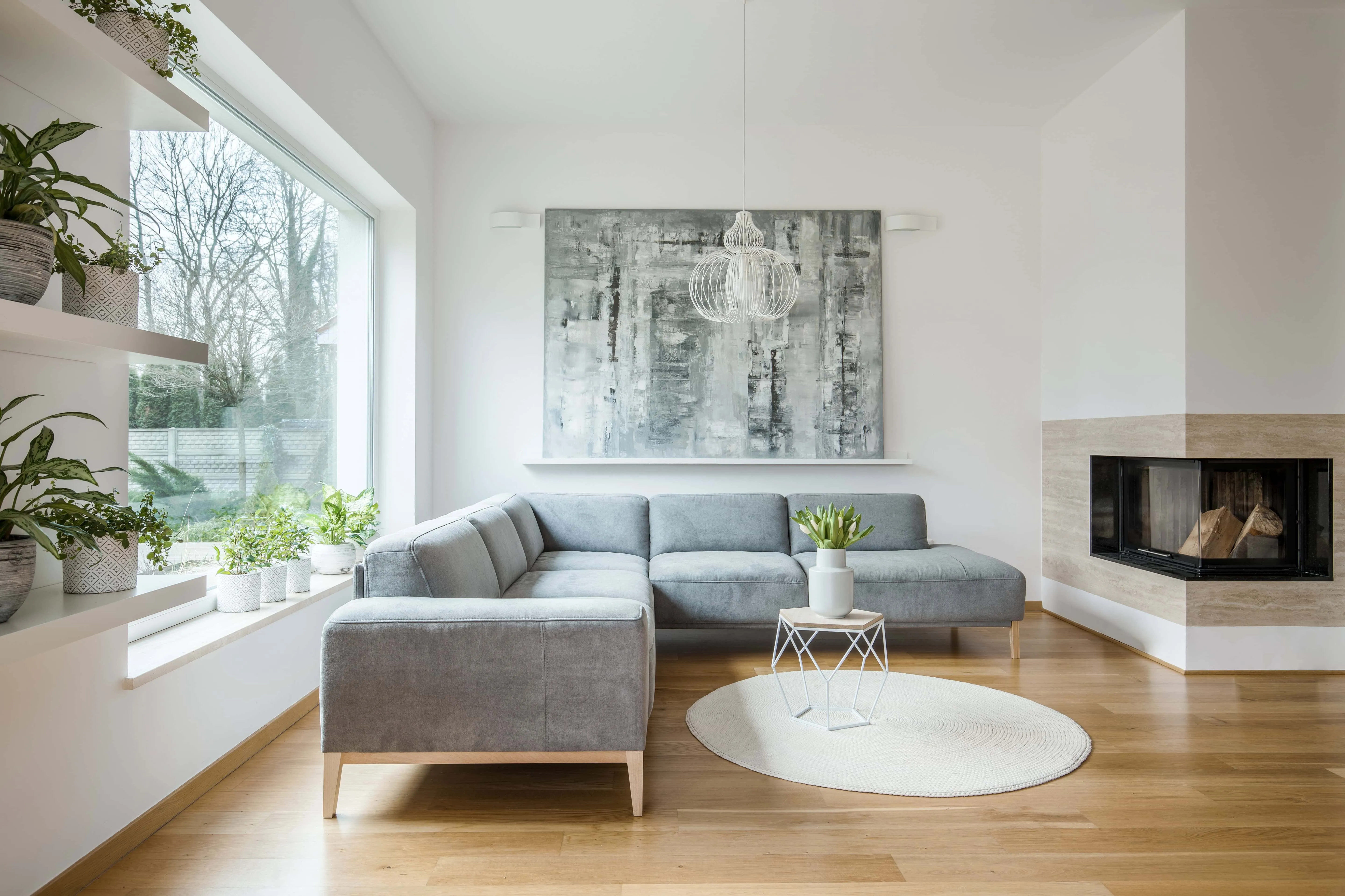There can be your advertisement
300x150
6 Tips for Creating and Maintaining Abundance in Your Home Garden
Have you ever walked into a room adorned with lush greenery and instantly felt a sense of calm and connection to nature? Indoor gardens possess the remarkable ability to transform any space into a picturesque oasis, but bringing this magic into your own home can seem like a challenging task.
How can you ensure the thriving of your garden and make it an engaging sanctuary for your feelings and soul? In this article, you'll discover six invaluable tips that will not only help you create a stunning garden but also guide you in maintaining its beauty and vitality.
Have you ever walked into a room adorned with lush greenery and instantly felt a sense of calm and connection to nature? Indoor gardens possess the remarkable ability to transform any space into a picturesque oasis, but bringing this magic into your own home can seem like a challenging task.

How can you ensure the thriving of your garden and make it an engaging sanctuary for your feelings and soul? In this article, you'll discover six invaluable tips that will not only help you create a stunning garden but also guide you in maintaining its beauty and vitality.
1. Assess Lighting Conditions
Before diving into creating your indoor garden, it's crucial to assess the lighting conditions in your space. Light is the life force that nourishes plant growth, and understanding its dynamics ensures your plants receive optimal light levels necessary for thriving.
Start by observing natural lighting patterns in your home. In which rooms does direct sunlight enter, and for how many hours? Are there shaded areas or spots that only receive diffused light? Understanding these differences will help you identify which plants will thrive in specific locations.
It's important to consider the intensity of light you choose. Different plants have varying light requirements, and aligning them with appropriate lighting levels is key to success. Some plants like succulents and cacti thrive in abundant direct sunlight, while others such as ferns and peace lilies grow well under filtered or indirect light.
2. Choose Suitable Plants
The popularity of indoor plants continues to grow. In fact, growing indoor plants is one of the most beloved hobbies in the United States. According to Statista, around 37.6 million American households actively grow indoor plants.
Therefore, choosing the right plants is vital for every home when creating a rich indoor garden. Each plant has unique needs and preferences, and selecting those that align with your space and lifestyle significantly increases your chances of success.
Consider the available space and size of your garden. Are you working with limited counter space or do you have room for large floor planters? Understanding spatial constraints will help you decide whether to choose compact plants like herbs and succulents or larger leafy plants such as monstera and fiddle leaf figs.
3. Proper Watering Methods
Watering is a fundamental aspect of caring for a living indoor garden. Providing your plants with the right amount of water at the right time is critical for their overall health and growth. Understanding your plants' unique watering needs and applying proper methods are essential to ensure optimal hydration and support their wellbeing.
One effective method is using self-watering pots. For example, self-watering indoor planters like TruDrop can simplify the watering process and promote moisture for plants. These innovative containers feature built-in reservoirs that gradually supply water to the plants as needed. This helps avoid overwatering or underwatering, as plants can draw moisture from the reservoir when necessary.
According to Crescent Garden, this self-watering feature is based on greenhouse irrigation systems, ensuring optimal plant hydration. With a wide selection of designs, styles, colors and materials available, there are various pot options to suit individual preferences and tastes.
Regardless of the type of pot you use, it's important to water your garden correctly. Start by checking soil moisture levels before watering. Insert your finger about an inch into the soil to determine if it's dry or slightly moist. If the soil is dry, this indicates a need for watering; however, if it still holds moisture, it's recommended to wait a bit longer before the next watering.
4. Ensuring Adequate Humidity
Creating the right level of humidity is vital for maintaining a lush indoor garden. Many home conditions tend to be drier than required for some plants to thrive. Fortunately, there are several effective ways to provide sufficient humidity for your green companions.
One of the most common approaches is using a humidifier. According to Master Class, humidifiers work by turning water into fine mist that increases air humidity and raises indoor moisture levels. Besides alleviating dry nose or allergies, humidifiers also help create a moist environment for plants by increasing air humidity.
Another method is grouping plants together. Since plants release moisture through small pores on their leaves called stomata, combining plants in groups increases overall evaporation, raising humidity levels in the immediate surroundings and benefiting all participating plants.
5. Regular Maintenance and Care
Creating a thriving indoor garden requires consistent dedication and care. Establishing a regular maintenance schedule is key to ensuring your plants not only survive but flourish in indoor conditions.
One important aspect of this schedule involves monitoring soil moisture levels. Regularly check the soil's water content by gently inserting your finger into the ground.
Based on results, adjust watering schedules accordingly, aiming to find a balance between overwatering and underwatering your plants. Remember that each plant has unique watering needs, so it's necessary to familiarize yourself with their specific requirements.
Pruning and trimming are also important for maintaining the ideal condition of your indoor garden. Regularly inspect plants for dead or yellowing leaves and carefully trim them using clean, sharp scissors or pruners. This helps redirect energy toward healthy growth and improves the appearance of your plants.
6. Fertilizing and Nutrient Management
To achieve and maintain a rich indoor green environment, proper fertilizing and nutrient management play an important role. While soil provides the foundation for nutrients, regular fertilization ensures your plants have access to essential elements for strong growth and vibrant foliage.
Choose a balanced fertilizer specifically designed for indoor plants. Look for formulations that include a blend of primary macronutrients (such as nitrogen, phosphorus and potassium) along with essential micronutrients (including iron, manganese, zinc and others).
Carefully read the application instructions and follow the recommended dosage to avoid over-fertilizing, which can harm your plants.
Real Simple recommends diluting fertilizer at a ratio of 1/4 to 1/2 tsp per gallon of water. Before applying fertilizer, it's recommended to water the plant first as moist soil promotes better nutrient absorption and protects the root system from burning.
Establish a fertilizing schedule based on your plants' needs. Generally, indoor plants thrive when fertilized every four to six weeks during the active growing season usually observed in spring and summer. However, during dormancy in fall and winter when plant growth naturally slows down, it's recommended to reduce or even stop fertilizing.
Bring the Beauty and Calm of Nature Into Your Home with Indoor Green Spaces
Creating and maintaining a rich indoor green space is an enriching activity that brings the beauty and calm of nature into your home. By applying these six invaluable tips, you can transform your indoor space into a flourishing oasis of greenery.
Remember the unique needs of your plants and adapt these suggestions to your home comfort. With dedication, patience and a bit of green love, your garden will thrive, bringing joy, calm and fresh air to your living space.
More articles:
 6 beautiful ideas for a blue bedroom
6 beautiful ideas for a blue bedroom 6 Advantages of Hiring Professional Garage Contractors
6 Advantages of Hiring Professional Garage Contractors 6 Benefits of Professional Basement Waterproofing
6 Benefits of Professional Basement Waterproofing 6 Best Tips for Choosing an Electrician for a Luxury Home
6 Best Tips for Choosing an Electrician for a Luxury Home 6 Best Tips for Interior Design Using Posters
6 Best Tips for Interior Design Using Posters 6 Brilliant Ideas for Simple Home Renovation
6 Brilliant Ideas for Simple Home Renovation 6 Brilliant Tips for Bedroom Renovation
6 Brilliant Tips for Bedroom Renovation 6 Common Roofing Installation Mistakes to Avoid
6 Common Roofing Installation Mistakes to Avoid